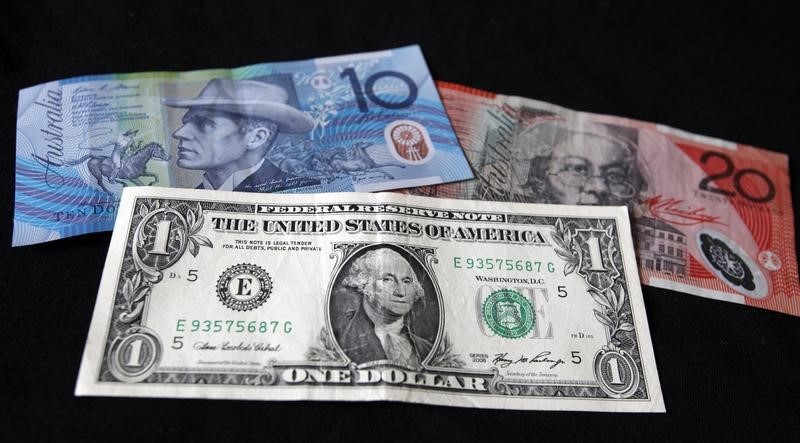By Cecile Lefort and Tom Westbrook
SYDNEY/WELLINGTON, March 17 (Reuters) - The Australian and New Zealand dollars were sidelined on Friday, but were on track for large weekly gains as the greenback lost steam after the Federal Reserve indicated it was unlikely to speed up monetary tightening.
The Australian dollar AUD=D4 held steady at $0.7675, within sight of a three-week peak of $0.7720 touched on Wednesday.
Since August, it tried around two dozen times to take a wall a resistance between $0.7707 and $0.7778.
Much of the recent strength came on broad U.S. dollar selling after the Fed signalled fewer interest rate hikes than some investors had expected.
Also underpinning were rising commodity prices and optimism about China's economy.
All of which has sent the Aussie 1.7 percent higher since Monday and if sustained, it would be the first such gain after five weeks of losses.
For the year, the Aussie has risen more than four cents.
It was also holding large gains versus its Kiwi neighbour at NZ$1.0982 AUDNZD=R , having popped above NZ$1.1000 for the first time since April last year.
The New Zealand dollar NZD=D4 edged up to $0.6989, from $0.6974 in early trade and away from a peak of $0.7050 touched on Wednesday.
It lost a bit of ground on Thursday after data showed the domestic economy grew 0.4 percent in October-December, from the previous quarter, versus a 0.7 percent forecast.
For the week, the kiwi was 0.9 percent higher, following two weeks of losses.
The focus is now on the Reserve Bank of New Zealand (RBNZ)'s policy review on March 23 with expectations it will keep rates at a record low of 1.75 percent.
"While we wouldn't want to overplay how weak the (gross domestic product) data was, they do nonetheless underscore the RBNZ's view that time is on its side," said ANZ senior rates strategist David Croy in a research note.
"None of that should be enough to shoot the Kiwi down, but strong growth was one of the key attractions, and things aren't quite as glowing as we thought on that score."
New Zealand government bonds 0#NZTSY= eased, sending yields 2.5 basis points higher.
Australian government bond futures dipped, with the three-year bond contract YTTc1 off 2 ticks at 97.920. The 10-year contract YTCc1 fell 5 ticks to 97.0900, while the 20-year contract YXXc1 was steady at 96.5600.
The premium between Australian AU10YT=RR and U.S. US10YT=RR 2-year government bonds dropped to 50 basis points, the lowest in more than a decade. (Editing by Kim Coghill)
